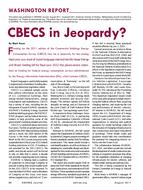In the framework of a project involving 6 French research laboratories and funded by the French Environment Management Agency(ADEME), field campaigns are carried out in low energy public buildings in France (schools, social centers, …). In a first step, ten buildings arestudied with “light” instruments (passive samplers for VOC, NO2 and ozone, impactors for PM2.5 and PM10, air flow measurement forventilation control, portable analysers for CO, CO2, relative humidity and temperature). Measurements are carried out during two 1-weekperiods, one with the occupants, the second one in the absence of the occupants. The outdoor air is also characterized in order to distinguish thecontributions from the occupants, from the building itself and from the air inlet system. The aim of this campaign is to characterize the levels andnature of pollutants in these low energy buildings, and to determine whether the specificities of these buildings, such as ventilation and thermalinsulation, lead to a different air quality than in the “traditional” buildings, as documented by the French Observatory of Indoor Air Quality(OQAI) in their survey of over 260 residental buildings.
In a second stage, we will select one of these low energy consumption building to carry out two intensive measurement campaigns and developa numerical model taking into account a detailed chemical mechanism, so as to identify the main processes involved in the formation and theconcentration of the pollutants in low energy buildings.
Citation: IAQ Conference: IAQ 2013: Environmental Health in Low Energy Buildings
Product Details
- Published:
- 2013
- Number of Pages:
- 7
- File Size:
- 1 file , 550 KB
- Product Code(s):
- D-2013IAQConf-42


